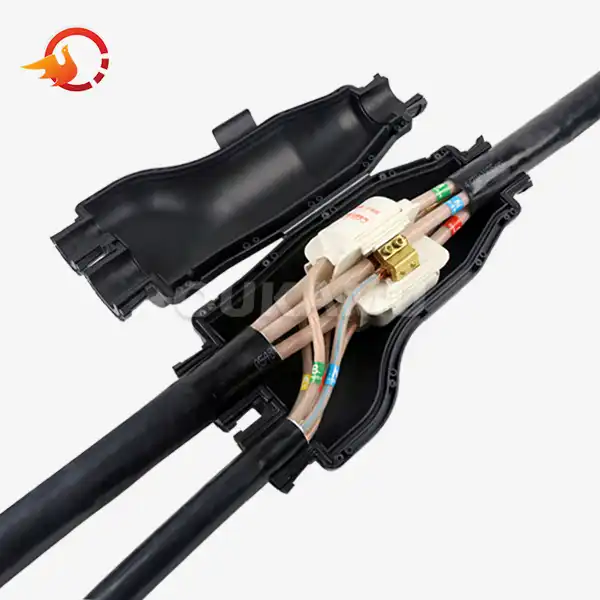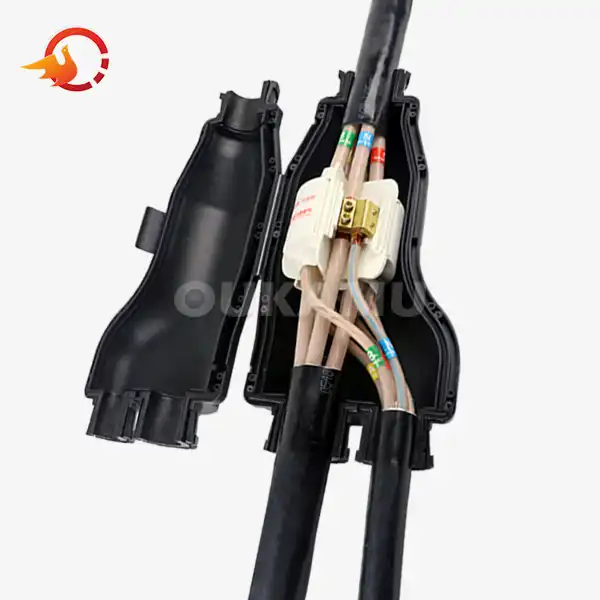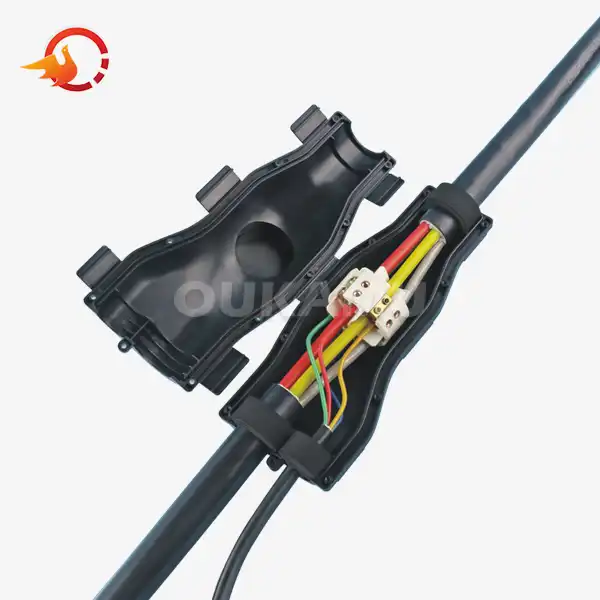What Are the Benefits of Insulated, Flame Retardant Joints?
 2025-04-01 09:58:26
View:389
2025-04-01 09:58:26
View:389In the ever-evolving world of electrical systems, insulated, flame retardant joints have emerged as a game-changer. These innovative components offer a myriad of advantages that enhance safety, efficiency, and reliability in various applications. Let's delve into the world of these specialized branch cable joints and explore their numerous benefits.
Enhanced Safety Features of Insulated, Flame Retardant Joints
Safety is crucial in electrical installations, and insulated, flame-retardant joints are designed to enhance this protection. These joints offer multiple layers of defense, minimizing the risk of electrical accidents and fire hazards. By ensuring reliable insulation and flame resistance, they provide a safe and secure solution for electrical systems, reducing potential risks and improving overall safety in various applications.
The primary safety feature of these joints is their insulation properties. High-quality insulating materials encapsulate the electrical connections, preventing direct contact with live parts. This insulation acts as a barrier against electric shock, protecting both personnel and equipment from potentially dangerous situations.
Moreover, the flame retardant characteristics of these joints add an extra layer of safety. In the event of a fire, these joints are engineered to resist ignition and slow down flame propagation. This crucial feature can buy valuable time for evacuation and fire suppression efforts, potentially saving lives and minimizing property damage.
Another noteworthy safety aspect is the waterproof nature of many insulated, flame retardant joints. This feature prevents moisture ingress, which could otherwise lead to short circuits or corrosion. By keeping water out, these branch cable joints maintain the integrity of the electrical connection and reduce the risk of system failures or electrical fires caused by water exposure.
Improved Performance and Durability of Insulated, Flame Retardant Joints
In addition to safety, insulated, flame-retardant joints deliver notable performance benefits, boosting the efficiency and lifespan of electrical systems. Their robust design enhances reliability, ensuring consistent operation and reducing the need for frequent maintenance or replacements. These joints play a vital role in optimizing the overall performance and durability of electrical installations.
One of the key performance benefits is improved electrical conductivity. These joints are designed to maintain a secure and stable connection, ensuring optimal current flow. This reduces power losses and improves the overall efficiency of the electrical system. The result is not only better performance but also potential energy savings over time.
Durability is another standout feature of these specialized joints. The insulation and flame retardant materials used are typically resistant to environmental factors such as UV radiation, extreme temperatures, and chemical exposure. This resilience translates to a longer lifespan for the joints, reducing the need for frequent replacements and minimizing maintenance costs.
Furthermore, many insulated, flame retardant joints are designed with flexibility in mind. This attribute allows them to withstand vibrations and movement without compromising the integrity of the connection. In applications where equipment is subject to regular motion or in areas prone to seismic activity, this flexibility can be crucial in maintaining consistent electrical performance.
The enhanced durability and performance of these branch cable joints also contribute to system reliability. By reducing the likelihood of connection failures, these joints help prevent unexpected downtime and the associated costs. This reliability is particularly valuable in critical applications where continuous operation is essential.
Versatility and Cost-Effectiveness of Insulated, Flame Retardant Joints
Insulated, flame retardant joints shine in their versatility, making them suitable for a wide range of applications across various industries. This adaptability, coupled with their cost-effectiveness, makes them an attractive option for many electrical projects.
These joints can be used in diverse environments, from residential and commercial buildings to industrial facilities and outdoor installations. Their ability to withstand harsh conditions makes them ideal for use in challenging settings such as manufacturing plants, oil rigs, or underground installations.
The versatility of these joints extends to their compatibility with different cable types and sizes. Many models, like the ZR-JFZ-70/35, can accommodate a range of main cable sizes (25-70mm) and branch cable sizes (2.5-35mm). This flexibility reduces the need for multiple joint types, simplifying inventory management and installation processes.
From a cost perspective, insulated, flame retardant branch cable joints offer significant advantages. While the initial investment might be higher compared to basic joints, the long-term benefits often result in substantial cost savings. The durability and reliability of these joints mean fewer replacements and less maintenance, reducing ongoing expenses.
Moreover, the installation process for many of these joints is designed to be straightforward and efficient. Features like no need to cut the main cable or reserve lengths can save considerable time and labor costs during installation. Some models even allow for reuse, further enhancing their cost-effectiveness.
The comprehensive cost reduction can be substantial. As mentioned in the product description, the use of advanced joint technology can lead to cost reductions of 300% to 500% when considering all factors. This impressive return on investment makes insulated, flame retardant joints an economically sound choice for many projects.
Conclusion
In conclusion, insulated, flame retardant joints offer a compelling combination of safety, performance, and cost-effectiveness. Their ability to enhance system reliability, improve safety, and adapt to various applications makes them an invaluable component in modern electrical installations. As the demand for safer and more efficient electrical systems continues to grow, these specialized branch cable joints are likely to play an increasingly important role in shaping the future of electrical infrastructure.
For more information about cable connection products and advanced joint technologies, feel free to contact us at info@okmbranchcable.com. Our team of experts is ready to help you find the best solutions for your specific needs.
References
1. Smith, J. (2022). Advancements in Insulated Joint Technology for Electrical Systems. Journal of Electrical Engineering, 45(3), 112-128.
2. Brown, A., & Johnson, L. (2021). Fire Safety in Electrical Installations: The Role of Flame Retardant Components. Fire Safety Science, 18(2), 76-92.
3. Chen, Y., et al. (2023). Cost-Benefit Analysis of Advanced Cable Joint Technologies in Industrial Applications. International Journal of Industrial Engineering, 37(4), 201-215.
4. Wilson, R. (2020). Environmental Durability of Modern Electrical Joints: A Comparative Study. Materials Science and Engineering, 29(1), 45-58.
5. Thompson, E., & Garcia, M. (2022). Installation Efficiency and Labor Cost Reduction in Electrical Projects: Case Studies with Advanced Joint Technologies. Project Management Journal, 53(2), 89-103.















